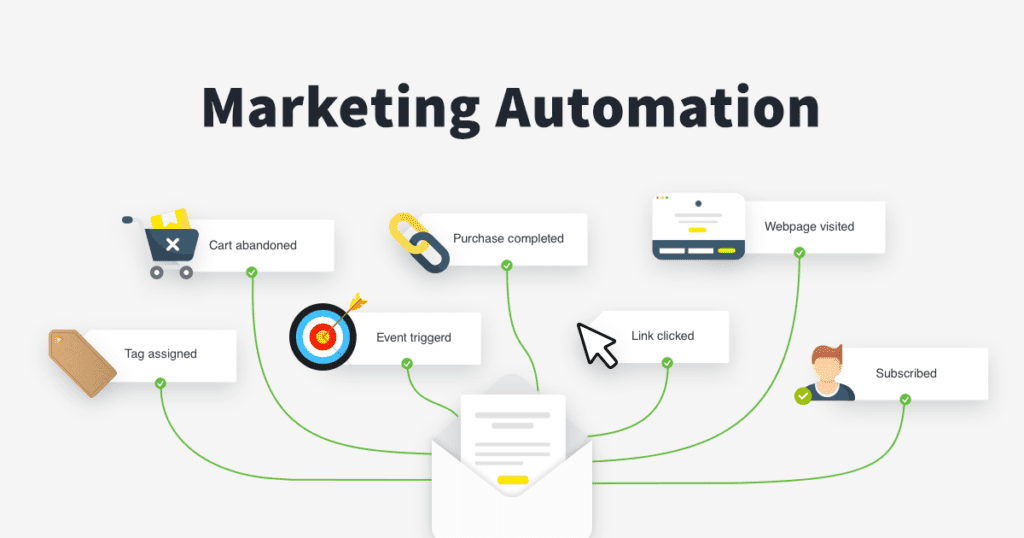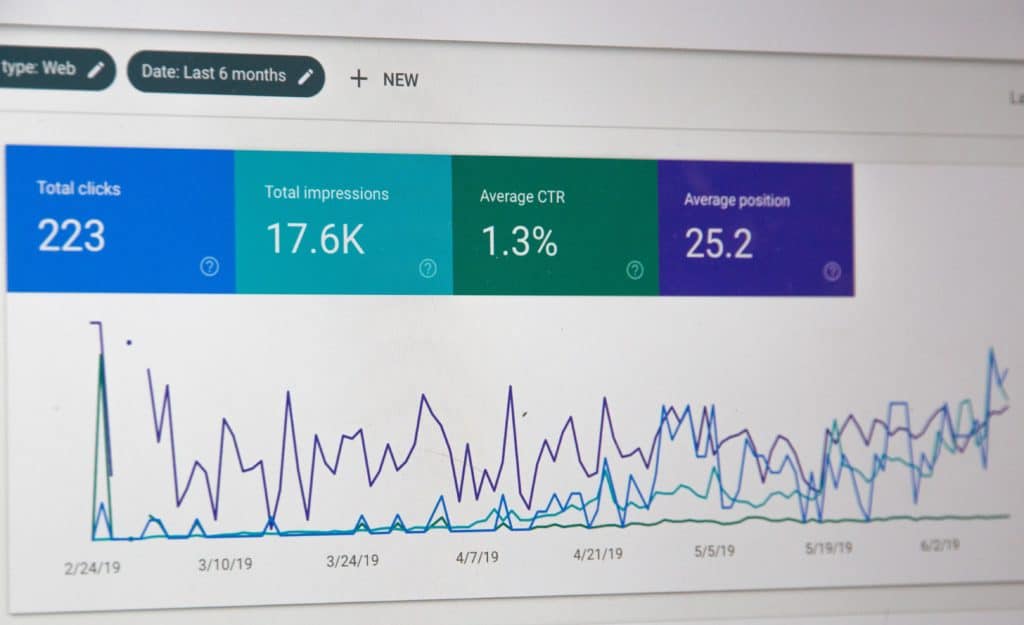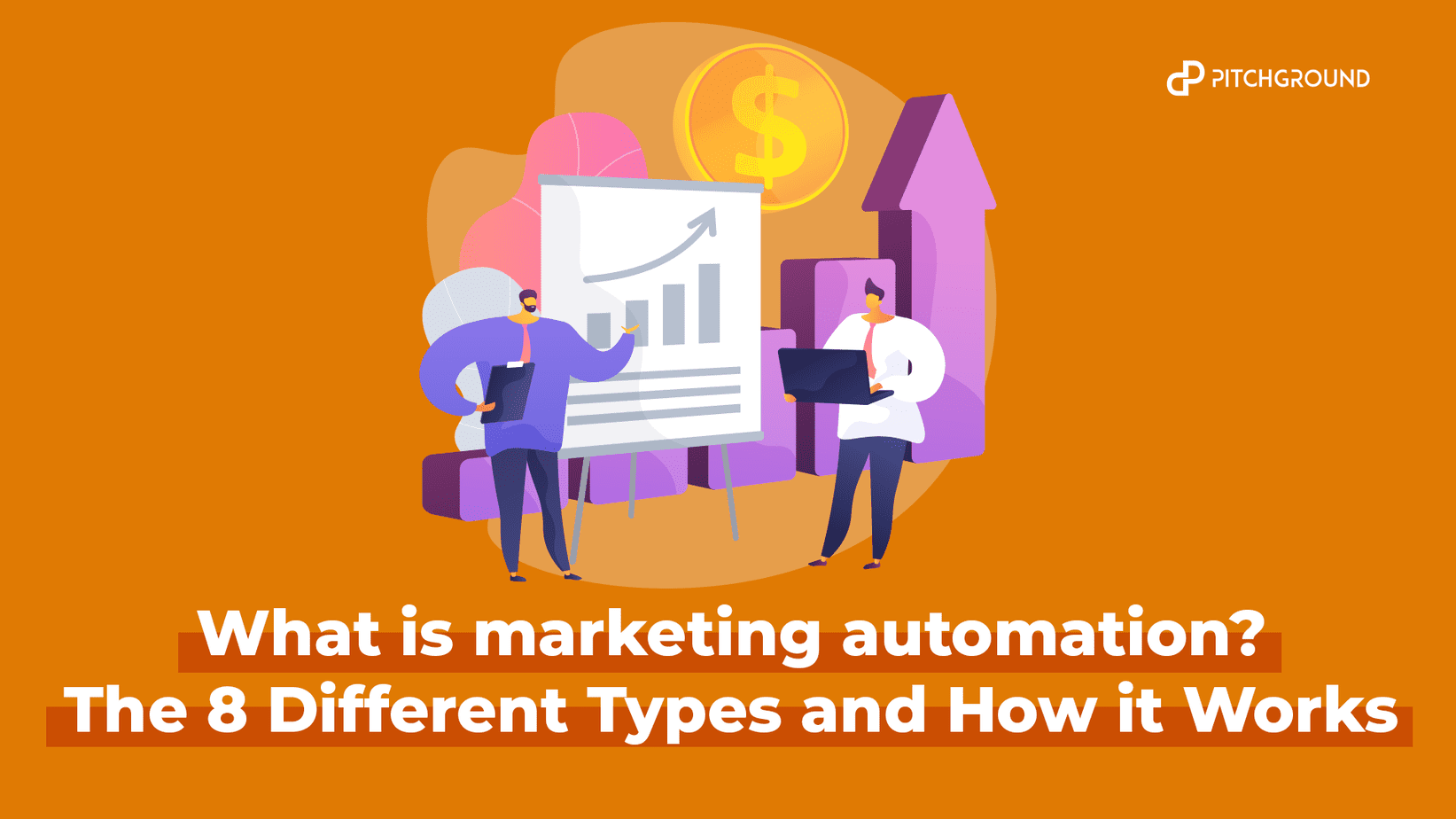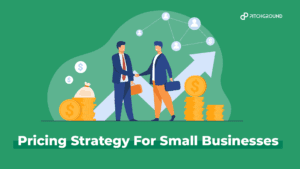We all have heard about Marketing Automation but What is Marketing Automation and What are its different types?
Marketing automation allows marketers to automate repetitive tasks such as email campaigns, social media posts, or landing page creation.
The goal of marketing automation is to increase efficiency and save time.
Marketing automation has become common for businesses looking to streamline their processes and improve customer experience.
In fact, according to Forrester Research, nearly half (45%) of companies plan to invest in marketing automation tools over the next year.

The top three ways businesses are using marketing automation include:
1) Lead management – automating lead generation through emails, web forms, phone calls, etc.
2) Customer relationship management – creating automated messages based on user activity to nurture leads, convert them into customers, and keep them returning.
3) Content publishing – automatically producing content like blogs, case studies, ebooks, whitepapers, etc.
Marketing automation platforms offer many features, including segmenting your lists, setting up workflow actions, sending personalized messages, and tracking results.
Most importantly, these platforms can help you avoid costly human errors by replacing manual tasks with intelligent algorithms.
We will get started by taking an overview of marketing automation and how it works.
Then we’ll look at some of its benefits for B2B companies.
Finally, we’ll take a deeper dive into how marketing automation platforms work so you know which one to choose.
What Is Marketing Automation?
First things first, let’s define what is marketing automation.
Simply put, marketing automation refers to any process where you use technology to manage a campaign from start to finish.
It includes every step of the way, from data collection to analysis to optimization to execution.
In this context, “automate” replaces human interaction with technology.
You don’t need to be a coding expert to set up marketing automation because most platforms have drag-and-drop interfaces.
There are different types of automation programs:

A/B testing: This lets you split test different versions of your website or mobile app without having to rebuild and deploy everything all at once.
Email marketing: This helps you send targeted emails to specific audiences.
Analytics: This provides reports about your traffic, conversions, and competitors.
Social media monitoring: This tracks mentions of your brand across social media channels and shares information about those mentions to other people who matter.
Lead nurturing: It helps you track prospects and find new ones more quickly.
Website analytics: This shows you which pages on your site are popular and aren’t generating enough traffic.
Content curation: This collects articles from around the internet and republishes them under one roof.
Campaign management: This helps you manage multiple campaigns at once.
These are just a few examples of the types of tasks marketers perform with marketing automation.
It takes a lot of time and effort to do them manually. And that’s why they were turned into software.
I hope the What is Marketing Automation part is clear now. So, let’s move on to how it works.
How Does It Work?
Now, After learning about What is Marketing Automation. Let’s break down the steps involved in marketing automation.
When you think of traditional marketing, you probably imagine someone sitting behind a desk, writing a press release, posting ads online, or calling potential customers.
That’s not exactly how marketing automation works. Instead, here’s how it usually goes:
Step 1: Data Collection
The first thing a marketing automation platform does is collect data from you.
It might involve collecting email addresses, phone numbers, or company names.
The goal here is to build as complete a list as possible and then use that list to target future marketing efforts.
Step 2: Target Audience Segmentation
Next, the platform uses that data to create a list of individual customers.
These customer profiles include demographic information such as age, location, gender, income level, and interests.
They also contain behavioral information like purchase history, preferences, and behavior patterns.
It allows you to tailor your messages based on their unique needs.
For example, you could focus your sales pitches on men between 25 and 45 years old if you sell wine. Or you could send offers only to women who live in California.
Step 3: Content Creation
Once you have a target audience segmented, the next step is to create content.
Most marketing automation tools have built-in templates for each type of content you want to make.
It can range from simple blog posts to sophisticated ebooks.
You fill out a form describing what you want to publish. Suppose you want to add text to an image, drag and drop an icon onto it.
Then click save or preview to see how it looks.
Step 4: Automated Email Marketing
Once you’ve created your content, it will automatically go out to your subscribers using automated email systems.
Some marketing automation tools allow you to schedule when these emails go out.
If you don’t have any subscribers yet, this is an excellent opportunity to start building yours!
You can use marketing automation platforms to help you grow your subscriber base.
Step 5: Personalized Customer Service
Finally, after all of your content has been delivered, you need to keep up with customer service requests.
Some companies make this easy by sending follow-up emails automatically. Others require you to take action yourself.
Either way, it’s essential to stay connected with your customers.

In Conclusion
Marketing automation is one of the most powerful tools available to modern businesses. (While reading this you might be thinking, I searched for what is marketing automation and I think I need to get those tools NOW)
You free up more time for higher-value activities like strategy development, creative work, and customer support by automating repetitive tasks.
However, you must be careful about which tool you choose.
There are many different marketing automation platforms on the market today.
All of them have features designed to improve efficiency.
But some of them may sacrifice quality over quantity. Make sure you find a platform that fits your needs before investing in it.



